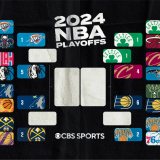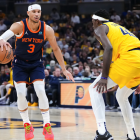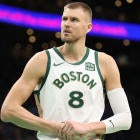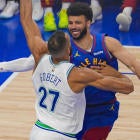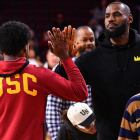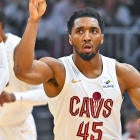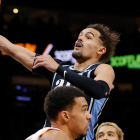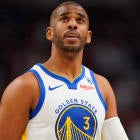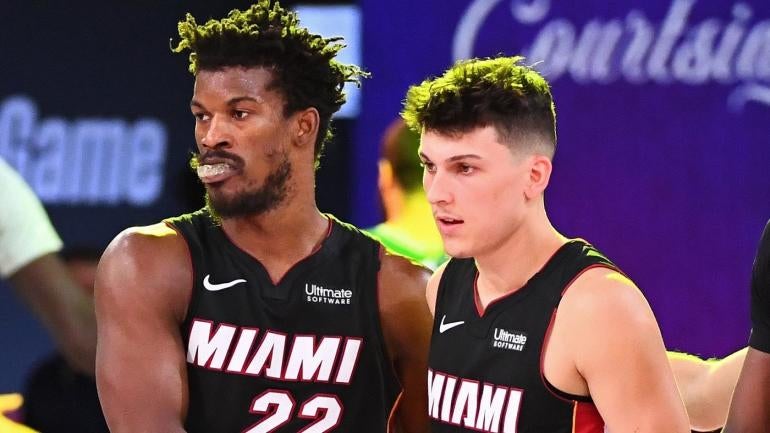
The NBA playoffs are when weaknesses are exposed, strengths are emphasized and the time when only those who can successfully strike a balance between two with poise survive. (Unless you've got LeBron James and Anthony Davis on your team. Then how those ancillary pieces perform tend to matter a bit less.)
Nonetheless, the lessons we've learned over the course of this specific postseason should serve as a teaching moment for how teams should attack the draft this year and beyond. The league continues to move in favor of versatile, multi-positional players -- guards and wings who can defend up and down the lineup. And as we've seen notably with the Heat, a premium is placed on shooting and playmaking, too, with teams around the association eyeing how Miami has used Duncan Robinson and developed Tyler Herro and deployed Bam Adebayo, and trying to play copycat because of how successful they've all been in their roles.
I've been watching closely and taking notes from the postseason, and here are a few thoughts on what that means generally and for this draft specifically.
1. Wings and forwards, moving up
There is perhaps no better example of the importance of a versatile wing than Miami Heat star Jimmy Butler, as he has helped carry this franchise to an NBA Finals appearances. He plays both ends of the court with tenacity and embraces his role as a switchable, lockdown defender. On offense, he's a catalyst who can get to the rim but can play off the ball as well.
In fact, the Heat on the whole are a great example of this trend of wing importance. They signed aging veteran Andre Iguodala, and he's had some great moments this postseason. Jae Crowder and Solomon Hill have also added depth, with Crowder's versatility allowing Miami to use him some at power forward. The way they've been able to use all of them in different roles, at different positions, at different times has given Erik Spoelstra enough roster flexibility to navigate a treacherous Eastern Conference and emerge victoriously.
Of course, I'd be remiss to omit the Boston Celtics from this section. They've reset their roster around Jayson Tatum and Jaylen Brown, who are two of the most versatile wings in the East. And that's not to mention Gordon Hayward, Semi Ojeleye or Romeo Langford. They have more wing depth, roster flexibility and versatility than they know what to do with. Not making the Finals shouldn't shine poorly on this strategy, either; I'd consider this Boston core as one of the most versatile in the league. The Celtics need to better fill spots around them, but their wing depth is chef's kiss, and a foreshadowing of how teams in the future will aim to build their rosters.
Want more analysis of the top prospects in the NBA Draft? Listen below and subscribe to the Eye on College Basketball podcast where we take a deep dive on the top players heading to the next level.
2. Specialty shooters in need
The league's value on versatile wings and forwards has been trending upwards for years now, but the increasing value of specialty shooters is relatively new. Every team has coveted itself a Kyle Korver or a J.J. Redick over the years, but that desire has only been renewed with the way the Heat have used the aforementioned Robinson. He's a deadeye shooter for Miami who can heat up in a hurry (no pun intended), and he's got a quick, fluid release that's incredibly repeatable and reliable.
That skill set is a perfect complement to a core already set in place. He fits on the Heat because they have enough shot creators, passers and bigs that he can blend in effortlessly and yet still have a profound impact.
These type of players likely aren't first-round, franchise-caliber players -- rather, they are players who can maximize the value of those you feel are. The Robinson's, Redick's, Korver's, Matt Thomases of the world who perhaps go overlooked but have a profound impact because of their elite skill as a shooter. There's always a hunt to find them, but Robinson's usage and success has added a new layer to that intrigue.
3. Versatility needed in bigs
Gone are the days when Roy Hibbert -- and players like him -- are All-Stars in this league. It takes more than being 7-feet tall and a good rebounder to be relied on as a difference-making center.
Lakers big man Anthony Davis is a Hall of Fame example, but he is indeed an example. A 6-foot-10 center/power forward, he can defend wings and bigs, rebounds at a high rate, blocks shots and can step out and hit 3-pointers.
Heat star Bam Adebayo is another example. Despite standing 6-9, Miami uses him as a multi-positional defender, shot creator and all-around playmaker. He's second on the team in assists this postseason.
Being capable of stretching the floor as a shooter is more and more being considered a baseline skill requirement as a big with lottery aspirations. But being able to pass and create or to defend post to perimeter are slowly being recognized as requisite skills for the position, too. Teams won't entirely pass on those that don't check those boxes, and there is no flawless prospect who does. But with bigs generally being increasingly marginalized in the NBA as it shifts towards guards and wings, the type of one-dimensional, back-to-the-basket centers and power forwards will no longer carry the same draft value they once did. Two of the best players in the Finals this postseason, Adebayo and Davis, help in part reflect this trend.
4. Creation ability
NBA teams will continue to seek out franchise-caliber point guards, but shot-creation -- whether it's for yourself or for your teammate -- is an invaluable talent. Most NBA players can knock down shots if they're assisted and have time and space to fire, for instance. But in a pinch, the ability to create separation and generate offense is a rarity.
This postseason, that's the Tyler Herro effect on the draft.
Herro didn't create much at Kentucky. He wasn't asked to do so, frankly. As such, he was used more as a spot-up shooter. Nut the Heat rookie has had the ball in his hands frequently this postseason -- and frequently, he has delivered.
He's never been afraid to fire from any distance, but he's made serious strides as a creator with the ball in his hands as well. The way he can carve out space to launch or drive to the hoop and finish has elevated his game to a new level. And for Herro, incredibly, it was a skill he rarely tapped at UK. So scouting based off team context is as crucial as ever, and projecting based off a player's previous role to their future or current role is a foresight that Pat Riley deserves a ton of credit for recognizing.
5. Players to target
I've laid out the various skill sets that are right now being voraciously sought after. Now let's look at who fits what teams might be looking for.
Two-way wings/forwards: Aaron Nesmith, Devin Vassell, Isaac Okoro, Saddiq Bey, Jordan Nwora
These players fit the archetype of 3-and-D types. Shooters who can knock down 3-pointers but can also make an impact defensively as true two-way players. With the exception of Okoro from this group, these are some of the most pure shooters in the draft who should be able to play both ends of the court at a high level because of their size, skill and scoring ability.
Specialty shooters: Aaron Nesmith, Devin Vassell, Saddiq Bey, Isaiah Joe, Jahmi'us Ramsey, Sam Merrill, Desmond Bane, Nate Darling, Justinian Jessup
Some obvious overlap here between the first category and the second -- among them the clear-cut first-rounders of Nesmith, Vassell and Bey -- but some additions, too. Isaiah Joe and Desmond Bane are two of my favorite prospects in this class because of their ability to knock down shots at a high level from anywhere on the court. Bane made 43.3% of his 575 3-point attempts during his four years at TCU.
Non-PG creators: Anthony Edwards, Tyrese Maxey, RJ Hampton, Deni Avdija, Leandro Bolmaro
Looking for untapped potential as creators, these players stand out for different reasons. Edwards because he can create his own shot; Maxey because of his straight-line driving; Hampton because of his tight handle; Avdija because of his positional playmaking; and Bolmaro because of his chops off the bounce. All of these guys have some interesting playmaking ability that should get maximized in the NBA as secondary creators, though they likely won't be called on to be No. 1 options as creators in part because of their positions.
Versatile bigs: James Wiseman, Obi Toppin, Aleksej Pokusevski, Jalen Smith
Wiseman is more versatile in theory than practice right now, but he's the clear-cut star of this bunch because of his 7-foot-6 wingspan, shot-blocking and fluidity. He has some nice shooting touch to boot, though that hasn't extended beyond the 3-point line. Toppin's game has, however, as he made 41.7% of his 3-pointers in two seasons at Dayton and emerged as a rim-running, floor-spacing force. Jalen Smith, too. As for Pokusevksi, he's a ball-handling, floor-spacing, shot-blocking international big with a skinny frame and needed development -- but all the physical tools to belong here as one of the most unique bigs in this class.









